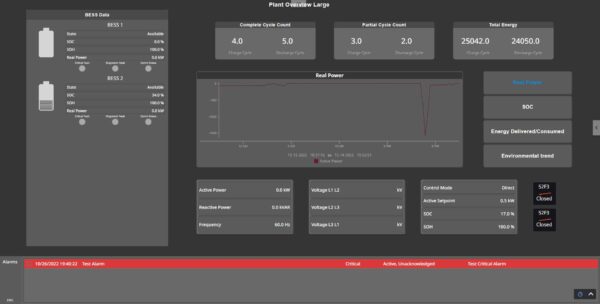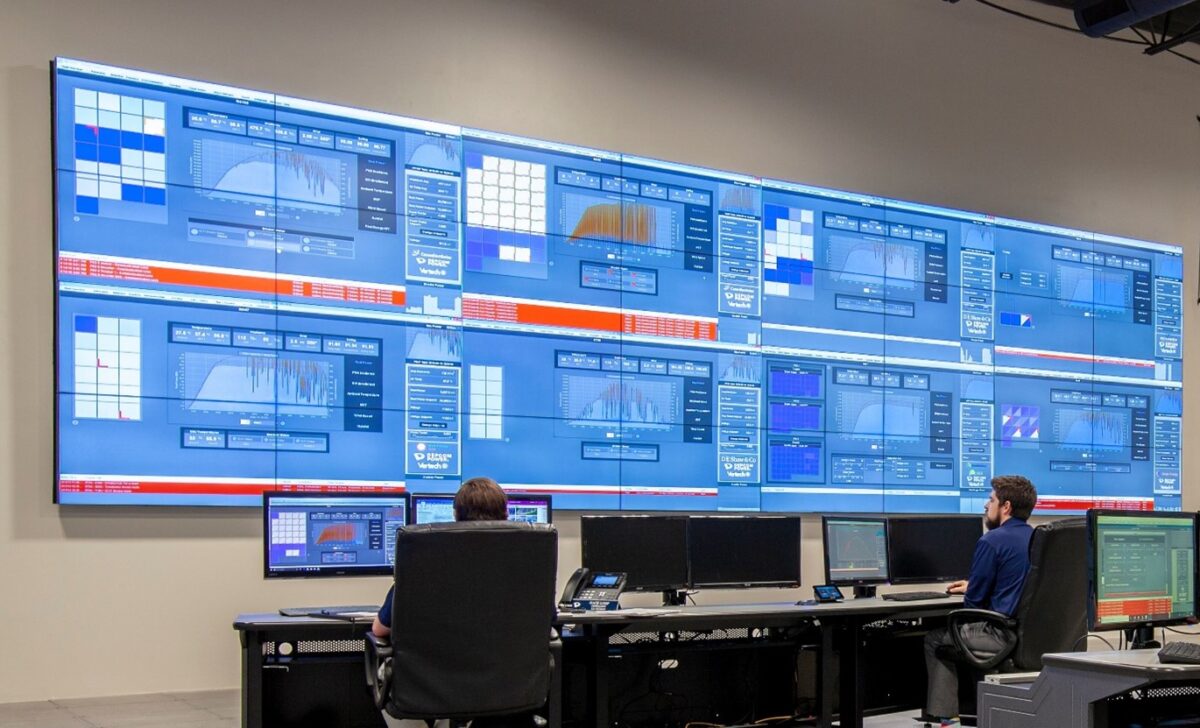The Inflation Reduction Act of 2022, signed into law in August, is bringing about significant changes to energy investment in America.
Annual installations of solar in the United States are expected to consistently reach 30 to 40 GW (DC) by 2024, according to the U.S. Solar market Insight Q4 2022 report, released by the Solar Energy Industries Association and Wood Mackenzie. The report forecasts average annual growth of 21% from 2023 to 2027, across all solar segments, New forecasts from BloombergNEF anticipate that the IRA will drive about 30 GW/111 GWh of energy storage in the U.S. between 2022 and 2030.
In addition to extending the investment tax credit (ITC) for solar and other renewable energy technologies for at least 10 years, the IRA also includes an expansion: For the first time, most energy storage technologies are eligible for the ITC in a stand-alone capability without being directly tied to otherwise eligible generation.
With this incentive, the central storage question is no longer whether to deploy it, but how much and how fast. As developers and asset owners move forward with battery energy storage systems (BESS), key strategies in system optimization can bolster financial benefits even further.
Walking the IRA’s fine line
In addition to restoring the ITC to its previous 30% level, the IRA created three additional 10% bonus credits to consider:
| ITC Bonus Credit | Incentive | Requirements |
| Low-income community | 10% | Qualified solar projects under 5 MWAC and related storage systems located in census tracts with a poverty rate of 20%+; metropolitan areas where the median family income does not exceed 80% of statewide level, or non-metropolitan areas where the median family income does not exceed 80% of greater of statewide or metropolitan area level |
| Energy community | 10% | Brownfield sites; coal mines retired after 1999 or coal-fired plants retired after 2009; communities which have (or since 2009 have had) 0.17%+ direct employment or 25%+ local tax revenue related to fossil fuel extraction, processing, transportation or storage, and which have unemployment at or above the previous year’s national average unemployment rate |
| Domestic content | 10% | 100% steel or iron produced in the U.S. 40% to 55% of the total cost of manufactured product components must be attributable to products mined, produced, or manufactured in the U.S. |
It’s important to identify the right mix of solar-plus-storage or stand-alone storage systems to create a top-performing asset. Look for an engineering, procurement and construction (EPC) partner who can optimize systems with both technologies, keeping tax and financial benefits in mind.
Strategizing augmentation and asset life
Balance control strategies and energy management systems to drive the optimal performance of an asset over its lifetime. Keeping batteries continuously charged at 100% degrades them faster as does failing to cycle them or cycling them faster than designed.
Ultimately, all systems will degrade, but the rate of degradation depends on how the system is utilized. While it’s important to figure out the right time economically to increase or augment a BESS by installing new batteries, the IRA and rapid technology advance mean there now are additional parameters to keep in mind.
Asset owners need to consider whether augmentation is a CapEx or an OpEx expense, which may have varying effects on their overall financial return strategy.
Optimization
Understanding the regional ISO’s rules and regulations can help identify the best use case/revenue stacking scenarios (i.e., energy only, ancillary only, or a combination).
From the start, the asset owner needs to determine the financial metric that best meets their goals because each metric can yield a different optimal design.
In engineering parlance, study the Pareto frontier, which is an optimization tool that leads to the ideal equilibrium between a system’s variables. Look for the optimal design solution that balances size, duration, and the system’s use profile while ensuring that the model aligns with reality. An experienced partner has insights into what every element of a design change costs. Financial modeling should consider not only the initial capital cost, but also the changes in both revenue and operational cost
This kind of analysis for PV-plus-BESS plant design optimization can take advantage of the following four common curves:
- Lowest LCOE (PV) – Maximum value to offtaker while meeting hurdle rate
- Lowest LCOS (BESS) – Maximum value to offtaker while meeting hurdle rate
- Highest ATIRR (PV + BESS) – Maximum value to the long-term owner
- Highest ATNPV (PV + BESS) – Maximum value to developer on project sale

Image: DEPCOM
Driving cost savings
A recent project modeled 15 battery systems with varying technologies and system configurations against local requirements, ultimately saving millions in avoided installation, augmentation, and replacement costs. The team assessed the batteries for price, bankability, power-to-energy ratio (P-rate), design life, cycle life, augmentation costs/schedule, and capacity degradation.
Proprietary analysis determined that traditional nickel manganese cobalt, nickel cobalt aluminum, and lithium ferro phosphate) battery cells would offer neither the duty life nor guaranteed calendar life required to sustain this project’s 25-year lifespan. Instead, they would require costly initial oversizing and multiple augmentations that would create future engineering integration challenges, and may require one full rip-and-replacement over the project’s life.
Optimizing at the start meant anticipated total savings of $19 million over the system’s 25-year lifespan.
Offtake agreements
Fundamentally, offtake agreements are useful in creating revenue certainty. This is a form of risk mitigation that investors and banks require and comes with opportunity trade-offs.
Power purchase agreements and fixed-tolling agreements are great risk mitigators, but with rapidly changing merchant markets there are unique upside opportunities. Decarbonization efforts, intermittent renewable penetration, and increasing grid load at unprecedented rates offer immense economic benefits.
This leads to the question of how best to balance a project’s risk profile with its upside potential/ Choose a partner with experience navigating the equation.
There are ways to design a system to capitalize on diverse market dynamics. Developers can take advantage of riskier merchant markets, or safer offtake contracts, or a mix of both to strike the right risk/reward profile for their project.
Bankable partner
In a perfect world, money could be saved by sourcing from individual component manufacturers, hiring a controls provider to integrate them, and then an EPC to lay foundations and the balance-of-plant. Another entity might even be brought in to maintain and/or operate the asset.
But in reality, unexpected hurdles arise which are outside the scope of individual contracts, especially with new products and technologies. This leaves the owner or developer on the hook financially while contractors point fingers at each other. This lack of a single responsible party eats away at contingency plans, and in many circumstances profits or returns, all of which creates an additional risk that should be considered.
Instead, partner with an integrated PV and BESS specialist who offers deep utility experience. Look for a company with in-house engineering, procurement, construction, and O&M expertise proven to deliver turnkey systems on time and on budget, and that perform as intended. An EPC with its own system optimization tools and know-how can help prevent costly overbuilds and enhance project financial metrics.
Scott Hoyte serves as DEPCOM’s chief technology officer and leads the EPC’s technology and O&M departments. As a project development engineer in DEPCOM’s energy storage division, Walker Wentzler oversees system optimization and design. DEPCOM Power has more than 5 GW of utility solar EPC experience and 2 GW of assets under management. This material has been prepared for informational purposes only and is not intended to provide, and should not be relied upon for tax, legal or accounting advice.
The views and opinions expressed in this article are the author’s own, and do not necessarily reflect those held by pv magazine.
This content is protected by copyright and may not be reused. If you want to cooperate with us and would like to reuse some of our content, please contact: editors@pv-magazine.com.








By submitting this form you agree to pv magazine using your data for the purposes of publishing your comment.
Your personal data will only be disclosed or otherwise transmitted to third parties for the purposes of spam filtering or if this is necessary for technical maintenance of the website. Any other transfer to third parties will not take place unless this is justified on the basis of applicable data protection regulations or if pv magazine is legally obliged to do so.
You may revoke this consent at any time with effect for the future, in which case your personal data will be deleted immediately. Otherwise, your data will be deleted if pv magazine has processed your request or the purpose of data storage is fulfilled.
Further information on data privacy can be found in our Data Protection Policy.